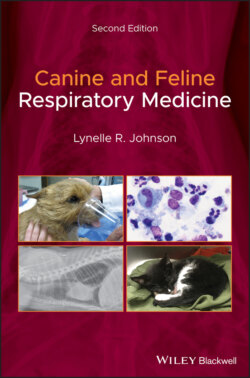Читать книгу Canine and Feline Respiratory Medicine - Lynelle Johnson R., Lynelle R. Johnson - Страница 40
Fluoroscopy
ОглавлениеAirway fluoroscopy uses air as the contrast medium to evaluate dynamic changes in the luminal diameter of the airways during normal breathing and during cough. Fluoroscopy is typically performed in lateral recumbency. It most readily recognizes cervical tracheal collapse because of the large airway diameter, but can also provide information on lobar bronchial collapse. A fluoroscopic study performed in right lateral recumbency will highlight the left lung lobes, while a study in left lateral recumbency will examine the right lobar bronchi, although right lateral recumbency appears to be used most commonly. Dorsoventral positioning would likely be required to identify collapse of the accessory lobar bronchus. Fluoroscopy has poorer resolution than radiographs and the lower image quality can hamper interpretation.
Given the intricate relationship between neural pathways of the respiratory and digestive tracts as well as their close anatomic association, videofluoroscopic swallowing studies have a role in investigating the underlying etiology of some respiratory diseases, as well as detecting risk factors for disease in other cases. Esophageal dysfunction and gastroesophageal reflux are common and can lead to chronic recurrent pneumonia or pneumonitis. Increasing evidence indicates that laryngeal paralysis in the geriatric Labrador is accompanied by esophageal dysfunction as part of a generalized neuropathy, and swallowing studies can help assess the risk for lower respiratory complications in affected dogs. Weak pharyngeal contractions in other breeds of dogs also can predispose to aspiration events. Interestingly, videofluoroscopy has revealed that brachycephalic breeds commonly display pharyngeal collapse (Pollard et al. 2018), likely due to anatomic issues and pressure fluctuations associated with respiratory effort. In addition to perpetuating aspiration injury to the lower respiratory tract, nasopharyngeal aspiration events can lead to nasal discharge and might be a cause for upper respiratory tract inflammation.
